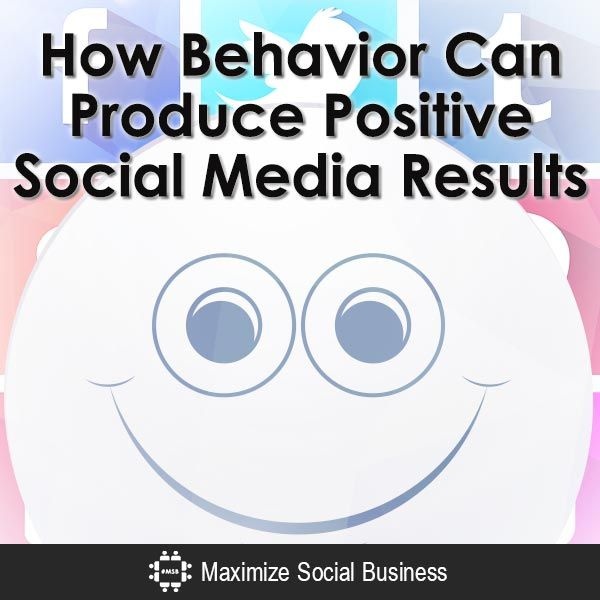
Behavioral psychology is one of the first things they teach you when you go to college. It’s introductory psychology, and it’s pretty simple to understand. People are peculiar. Trying to understand what makes them behave can drive you absolutely batty. Trying to figure out why you didn’t make the sale or what causes people to bounce right off of your site can be balanced in the confines of using behavioral psychology in your social media updates.
This is all Psychology 101. Pretty simple, and, if I had half a brain, I would have started all of these social media psychology posts with this one, but I didn’t. Alas, it was not to be. However, I can make up for it by showing you some pretty neat things that you can do to determine someone’s behavior in regard to social media that will drive traffic right to your site.
What Is Behavioral Psychology?
I’ll start with this:
“Give me a dozen healthy infants, well-formed, and my own specified world to bring them up in and I’ll guarantee to take any one at random and train him to become any type of specialist I might select — doctor, lawyer, artist, merchant-chief and, yes, even beggar-man and thief, regardless of his talents, penchants, tendencies, abilities, vocations, and race of his ancestors.”
–John Watson
John Watson believed that behaviors could be trained or changed given a certain time limit and scenario that he could control. Behaviorism, also known as behavioral psychology, is a theory of learning based upon the idea that all behaviors are acquired through conditioning. Conditioning occurs through interaction with the environment. Behaviorists believe that our responses to environmental stimuli shape our behaviors.
I believe this theory is the key for someone who is looking to attract traffic from social media.
So you’re not getting that much traffic and people aren’t noticing you on social media? By using conditioning methods, you can grab people’s attention over time. That person that never knew you existed three months ago can become conditioned to visit or share because when they actually see and engage with you over and over on a social platform. Maybe they’re not actually interacting with your updates, but they ARE seeing them. It’s consistency, but backwards. Usually, in order to gain the attention of an influencer on social media, consistency is needed. Staying consistent with commenting, sharing, and engaging will condition them to remember who you are, and help you reach out to them more easily in the future.
Conditioning variables like these prove that, over time, peoples’ behaviors can change. That person that never gave you a second glance three months ago might now start to interact with you. Perhaps a couple of months after that (and maybe not even that long), that person will eventually become a regular visitor to your site and sharer of your content.
That’s the softer side of behavioral psychology. On a stronger note, studies have shown that you can change the way someone does a task, i.e., sharing a post and interacting, and even purchasing something from you, regardless of their personality or thoughts. It just takes conditioning.
Remember Pavlov’s dog?
NO, I’ve got one better…remember that episode of The Office where Jim triggered his computer to make a dinging noise whenever he turned it off, and every time the computer dinged, he gave Dwight a mint? After doing this many times, Jim finally turned his computer off, it dinged, and, because Jim had altered Dwight’s behavior, Dwight automatically stuck out his hand for the mint that wasn’t there. He even told the camera later that his breath tasted bad!
That’s conditioning. Repetition. Over and over. This particular conditioning is also called “classical conditioning,” and one I want to focus on today.
Classical Conditioning & Social Media
Having no other option but repetition, your social strategy can be stripped down to something as simple as the above example. Now, you don’t have a bell, or a mint to give your audience when they hear the bell, but in a sense, you have a similar scenario.
The Bell and The Reward
The bell is the thing in social media that will get peoples’ attention. As you already know, getting the attention of the potential visitor is key to driving traffic. The key to doing this is great content.
I see classical conditioning at play every day in social media. A great guy and my new friend, Mark Traphagen, displays this regularly. What I mean is people of his status on social media didn’t get there overnight. It’s pretty safe to say that Mark didn’t get his interactive social media following overnight.
It came as a result of consistent posting and constantly providing great information. The result is happy and interactive readers that jump at the chance to talk to this man because of his expertise.
Can you create authority? Sure. Many people have done it. You can create authority on social media one of two ways. You can be a great content marketing curator, which basically means you search for great content that others have written, or you can be the content manufacturer. Either way, you still end up conveying that you know your stuff. Although the content manufacturer usually ends up with the bigger following, there is no hurt in sharing someone else’s articles that you feel are worthy of sharing.
The End Result
Using behavioral cues in social media is simply taking advantage of the “bell”. It’s already there. There are social platforms that have created a personalized soap box for you to shout from. It’s up to you to choose what to shout. Make it good, make it consistent, and give it time. You can’t change someone’s behavior overnight. With time, trust grows, contacts are made, and friendships are formed. That’s when authority evolves. In all actuality, unless you’re a superstar already, the authority doesn’t come from a website itself, but social platforms. Make what you say count.
What Is Behavioral Psychology?
I’ll start with this:
“Give me a dozen healthy infants, well-formed, and my own specified world to bring them up in and I’ll guarantee to take any one at random and train him to become any type of specialist I might select — doctor, lawyer, artist, merchant-chief and, yes, even beggar-man and thief, regardless of his talents, penchants, tendencies, abilities, vocations, and race of his ancestors.”
–John Watson
John Watson believed that behaviors could be trained or changed given a certain time limit and scenario that he could control. Behaviorism, also known as behavioral psychology, is a theory of learning based upon the idea that all behaviors are acquired through conditioning. Conditioning occurs through interaction with the environment. Behaviorists believe that our responses to environmental stimuli shape our behaviors.
I believe this theory is the key for someone who is looking to attract traffic from social media.
So you’re not getting that much traffic and people aren’t noticing you on social media? By using conditioning methods, you can grab people’s attention over time. That person that never knew you existed three months ago can become conditioned to visit or share because when they actually see and engage with you over and over on a social platform. Maybe they’re not actually interacting with your updates, but they ARE seeing them. It’s consistency, but backwards. Usually, in order to gain the attention of an influencer on social media, consistency is needed. Staying consistent with commenting, sharing, and engaging will condition them to remember who you are, and help you reach out to them more easily in the future.
Conditioning variables like these prove that, over time, peoples’ behaviors can change. That person that never gave you a second glance three months ago might now start to interact with you. Perhaps a couple of months after that (and maybe not even that long), that person will eventually become a regular visitor to your site and sharer of your content.
That’s the softer side of behavioral psychology. On a stronger note, studies have shown that you can change the way someone does a task, i.e., sharing a post and interacting, and even purchasing something from you, regardless of their personality or thoughts. It just takes conditioning.
Remember Pavlov’s dog?
NO, I’ve got one better…remember that episode of The Office where Jim triggered his computer to make a dinging noise whenever he turned it off, and every time the computer dinged, he gave Dwight a mint? After doing this many times, Jim finally turned his computer off, it dinged, and, because Jim had altered Dwight’s behavior, Dwight automatically stuck out his hand for the mint that wasn’t there. He even told the camera later that his breath tasted bad!
That’s conditioning. Repetition. Over and over. This particular conditioning is also called “classical conditioning,” and one I want to focus on today.
Classical Conditioning & Social Media
Having no other option but repetition, your social strategy can be stripped down to something as simple as the above example. Now, you don’t have a bell, or a mint to give your audience when they hear the bell, but in a sense, you have a similar scenario.
The Bell and The Reward
The bell is the thing in social media that will get peoples’ attention. As you already know, getting the attention of the potential visitor is key to driving traffic. The key to doing this is great content.
I see classical conditioning at play every day in social media. A great guy and my new friend, Mark Traphagen, displays this regularly. What I mean is people of his status on social media didn’t get there overnight. It’s pretty safe to say that Mark didn’t get his interactive social media following overnight.
It came as a result of consistent posting and constantly providing great information. The result is happy and interactive readers that jump at the chance to talk to this man because of his expertise.
Can you create authority? Sure. Many people have done it. You can create authority on social media one of two ways. You can be a great content marketing curator, which basically means you search for great content that others have written, or you can be the content manufacturer. Either way, you still end up conveying that you know your stuff. Although the content manufacturer usually ends up with the bigger following, there is no hurt in sharing someone else’s articles that you feel are worthy of sharing.
The End Result
Using behavioral cues in social media is simply taking advantage of the “bell”. It’s already there. There are social platforms that have created a personalized soap box for you to shout from. It’s up to you to choose what to shout. Make it good, make it consistent, and give it time. You can’t change someone’s behavior overnight. With time, trust grows, contacts are made, and friendships are formed. That’s when authority evolves. In all actuality, unless you’re a superstar already, the authority doesn’t come from a website itself, but social platforms. Make what you say count.
I invite you to join here www.tsu.co/gungputri



